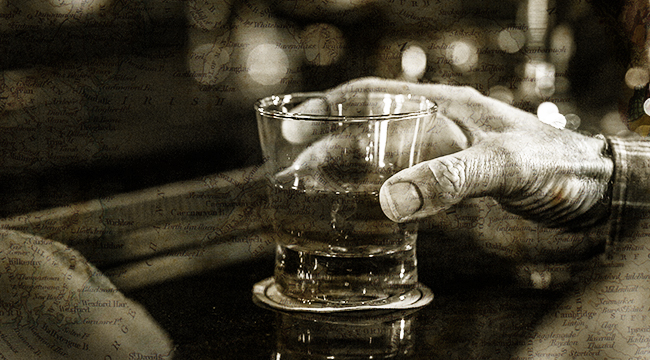
If you’re not an avid Scotch drinker, wandering your local liquor store only to end up grabbing a bottle of Laphroaig and a bottle of The Macallan, you’re going to be in for a bit of a shock when you open them later. Though they’re both Scotch whiskies, their flavor profiles are shockingly different. Your bottle of The Macallan (let’s say it’s a 12-year-old expression) was aged in oak barrels before spending a little bit of extra time in sherry butts. The result is a sweet, complex, gateway whisky with hints of cinnamon, vanilla, and Christmas plums.
Your bottle of Laphroaig (a 10-year-old), on the other hand, will pretty much taste like a briny smoke bomb to an unaccustomed palate. The Islay-product is a peated whisky. This means that peat (an oil-rich soil that is dried and burned as fuel in the British Isles) smoke is used to dry the barley later used to make the whisky. The result can be quite surprising, especially if you were expecting something that more closely resembled bourbon.
To truly learn about Scotch, you need to have at least some background on the various Scotch producing regions of Scotland. And there’s no better time to do that than July 27th, National Scotch Day. So get your read on and then get your drink on. Each sip will be all the more satisfying after being schooled on the various Scotch whisky regions.
The Lowlands
The Lowlands are chocked full of lush fields of barley, due to the fact that they have a milder climate than much of Scotland. The whisky distilleries in this region are also known for their large copper stills. Larger stills mean more surface area for the vaporized whisky to mingle. That also means that if you purchase a Lowland whisky, you’re likely to be met with a lighter, sweeter juice than any of the other regions.
Well-known brands: Auchentoshan, Glenkinchie, and Bladnoch
The Highlands
If you’ve ever been to the Scottish Highlands, you’ll notice a distinct change from green to a little more yellow and brown in the surrounding hills. Historically this shortage of growing land meant that there was less barley to use for whiskey production. Because of this, many of the Highlands’ distilleries have smaller stills — known to create more rich, robust, and dry whiskies.
Well-known brands: Glenmorangie, Oban, and Aberfeldy
Speyside
https://www.instagram.com/p/B0XDjL-grcR/
Speyside might be one of the smaller regions of Scotch production, but it’s by far the most heavily saturated. The region makes up around 50 percent of the country’s total whisky production and some of the most well-known brands. Since there are so many different distilleries (around 50), it’s hard to pin down a specific flavor profile. But, if you’re a bourbon fan, this region is for you. You’ll definitely find quite a few sweeter, sherry finished offerings.
Well-known brands: Glenfiddich, Glenlivet, The Macallan
Islay
https://www.instagram.com/p/BynqRqFpXVe/
Islay is the southernmost inner Hebridean island. It’s home to around 2,000 people, 30,000 sheep, and nine distilleries (Ardnahoe opened earlier this year). If there’s one important thing to know about Islay it’s that it’s the island for smoke fans. That’s because the distilleries are known for producing peat-smoked whiskies that are an acquired taste for many novice drinkers.
Well-known brands: Lagavulin, Bruichladdich, and Ardbeg
The Islands (that aren’t Islay)
Often considered as part of the Highlands, the other whiskey-producing islands aren’t known for a specific style, but many are peated like Islay whiskies.
Well-known brands: Highland Park, Talisker, and Jura
Campbeltown
For Scotch newbies, Campbeltown being a region might seem a bit confusing. But… for some reason it is. Located on the Kintyre peninsula, Campbeltown isn’t known for a specific flavor profile or style and currently only has three distilleries (even though at one time there were thirty right in the town).
Well-known brands: Springbank, Glengyle, and Glen Scotia






